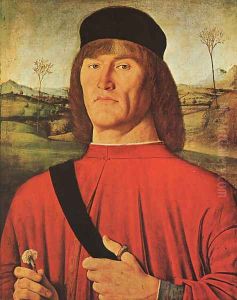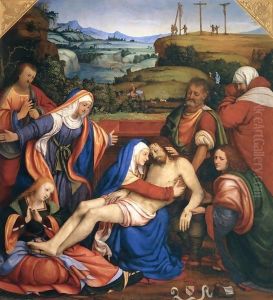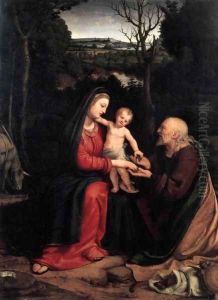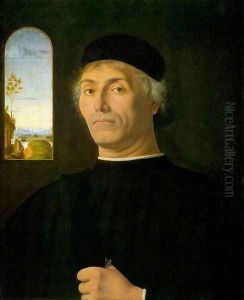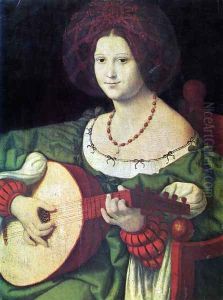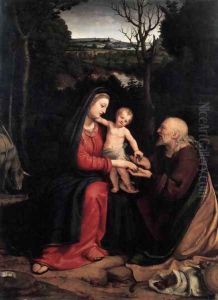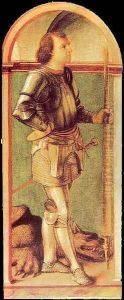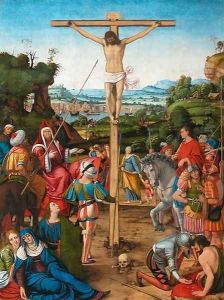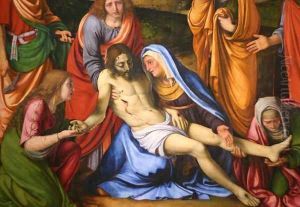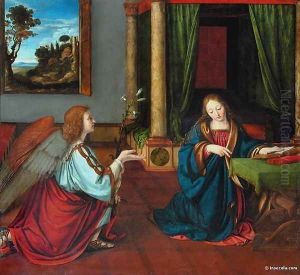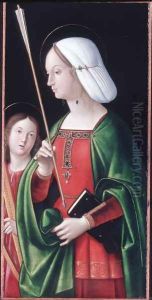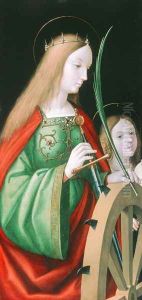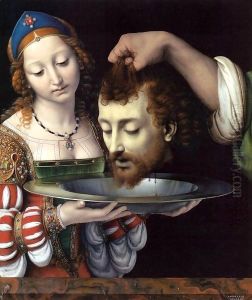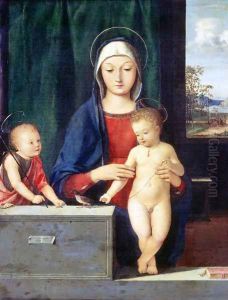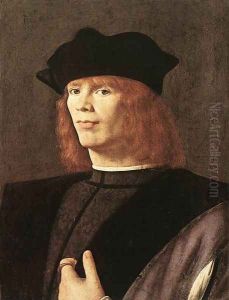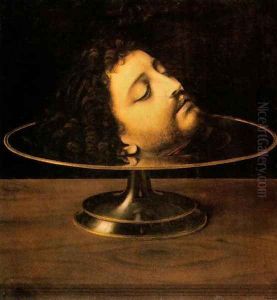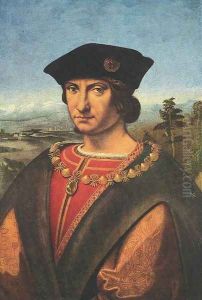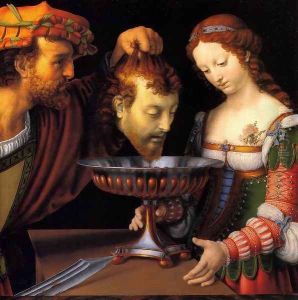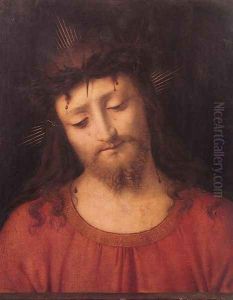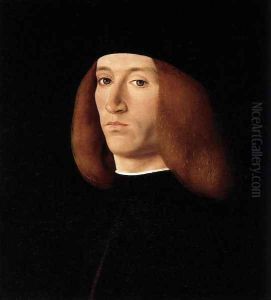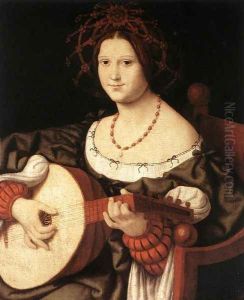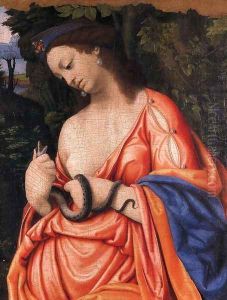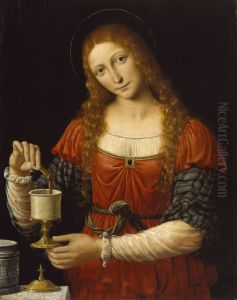Andrea Solari Paintings
Andrea Solari, also known as Andrea del Gobbo, was an Italian Renaissance painter of the Milanese school. He was born around 1460 in Milan and was thought to have been a pupil of the painter Giovanni Antonio Boltraffio, who was a student of Leonardo da Vinci. Solari's works are known for their fine detail, strong coloring, and the influence of Leonardo, which is evident in his use of sfumato and his attention to anatomical accuracy.
Solari traveled to Venice and possibly to France, absorbing different regional artistic styles which influenced his technique. His stay in Venice is suggested by the Venetian qualities seen in his paintings. It is believed that Solari may have visited France upon the request of Louis XII, who commissioned works from him, including a version of the 'Madonna with the Green Cushion'.
One of Solari's most famous works is 'The Man of Sorrows', which showcases his skill in rendering human emotion and his mastery of chiaroscuro. Another notable work is 'The Lamentation over the Dead Christ', which again reflects the influence of Leonardo and Solari's ability to depict human grief.
Despite the clear influence of Leonardo, Solari developed a distinctive style, characterized by the use of deep, rich colors and a talent for portraiture. His religious images and altarpieces were particularly praised for their devotional impact and their ornate, yet precise, execution.
Andrea Solari's contribution to the Milanese school was significant, and his works can be found in various museums and collections around the world. He continued to work in Milan until his death in 1524. While not as widely recognized as some of his contemporaries, Solari's artistry represents an important chapter in the history of Italian Renaissance painting.
